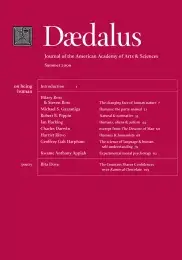Humans: the party animal
By definition, the species Homo sapiens is unique. Over a time course of approximately seven million years, humans have evolved into quite a different animal from what was the last common ancestor we share with our closest surviving relative, the chimpanzee. Trying to figure out how we came to be what we are, and identifying what aspects, both physical and behavioral, we share with other animals, most especially the chimpanzee, and those that are uniquely human has been of ongoing interest.1
Take a minute the next time you go to a dinner party, barbecue, wedding reception, or baby shower–run-of-the-mill events for us Homo sapiens–to ponder the fact that such events are completely unheard of in any other species. What other animal would plan an event, provide food to unrelated others, and sit together and share it without a food fight, all while laughing about stories of the past and hopes and dreams of the future? There is none. No matter how smart your family dog may be, he would not divvy up a prime rib roast and pass it out to the other dogs of the neighborhood with a happy little bark; neither would our closest relatives, the chimps. Humans are social beings, and although there are other animal and insect species that are social, our species takes sociability to a previously unknown level. We are party animals, and on our way to becoming such we have evolved a whole host of unique features–features so unique that we humans are playing in another ballpark.
Although many may suggest that humans act “like a bunch of animals,” and the daily news intimates that we are endlessly fighting with one another, it is by cooperating with and helping unrelated others that we are unparalleled among animal species. Something is markedly different in our brains: we are “wired” differently. The results of this altered wiring allow humans to read books, or to go to the symphony, school, or jail. That is not to say humans are 100 percent different. In fact, most of our automatic processing is much the same as in other animals.
Although all species are unique unto themselves, all have a common origin and are made up of the same materials. It isn’t surprising that when Charles Darwin first proposed that humans were descended from the great apes, he thought that the difference between us and our closest relatives, the chimpanzees, was a quantitative difference, not a qualitative one. We were just fancier apes with bigger brains, Darwin reasoned. In the mid-1960s, however, Ralph Holloway added to Darwin’s theory, concluding that brain reorganization, rather than brain size alone, resulted in the evolutionary changes in cognitive capacity. Evidence for Holloway’s insight is accumulating. . . .
Access the full issue here.
